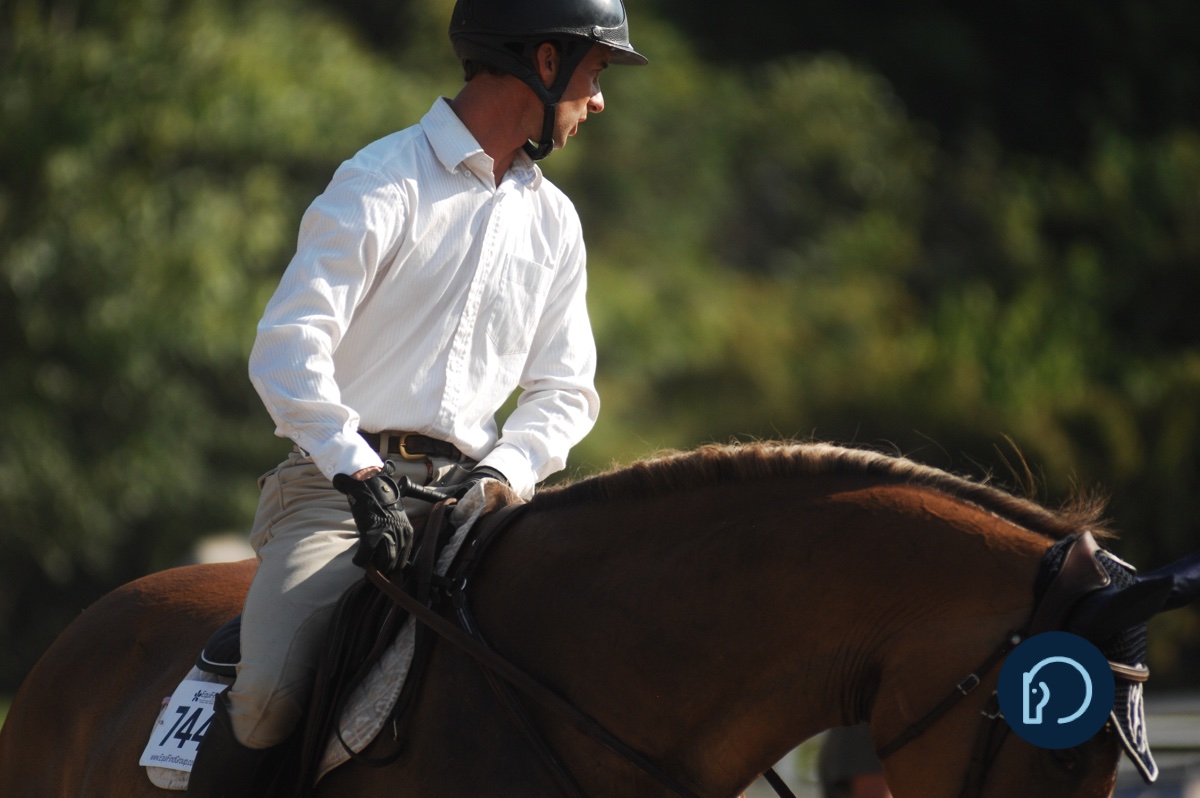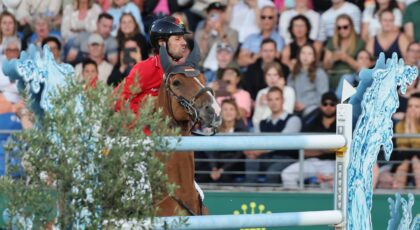True is progressing nicely in many ways and is still sticky in others.
I’ll write a full assessment for you soon, and we will go back to the topics of flying changes and jumping soon as well. But today, I have to share with you the joy of the butter canter.
True’s conformation helps him produce smooth gaits. He has nice long pasterns to absorb shock, ideal hoof and pastern angles to carry his 1,500 pounds of weight, big round feet for stability, and a strong short-coupled back to carry me. His legs are straight, so there’s no added motion from paddling or winging.
In addition, he has learned self-carriage over these early years. As you know from past articles, I have taught True that it is his job—not mine—to carry himself in a balanced manner.
Easy but consistent lessons in roundness have paid off, producing a horse who moves in a long frame but with only the softest subtle aids from the rider. He has a rocking chair canter and a floating trot that are pure pleasure to ride.
But the other day, he offered me the best canter ever!
I have high expectations of True’s daily performance, and he exceeded them all. A perfect canter depart from the walk, delivered off light pressure from one leg. Soft as butter in his mouth and back. Pure silk in motion. Hind legs reaching up under himself with ease.
The best part is that I didn’t really ask for this—I didn’t do anything specific on that day to improve True’s canter. I just enjoyed the spoils of True’s near-daily training over the past several years.
What I liked most about the butter canter is that True produced it with such gentle ease. There was no pulling on his mouth or pushing with my legs. True works in a thick eggbutt snaffle, and I use very light hands with less contact than most warmbloods are accustomed to. I try to remain quiet but supple in my body so as not to interfere with the horse’s motion.
True has never worn a dropped, diamond, or flash noseband—nothing touches his lips below the bit. And the standard noseband just below his cheekbones is loose; I can fit at least three fingers under it. (If we were out fox-hunting with brush getting caught in his bridle, I’d tighten it a little. But we’re not.)
He wears no martingale or draw reins, and he never longes with side reins or those awful Pessoa training systems that wind around the horse’s hamstrings. You could say I’m a purist.
This is not to say that I would never use something like a martingale. It’s that a horse who is well trained from the start won’t need one.
Unfortunately, I and other trainers often ride horses we didn’t start… and those horses sometimes need corrections that humane forms of equipment can offer. The trick is in knowing how to use that equipment softly and gently, only as temporary assistance for a short period of time.
Good training and soft riding are the best ways to achieve roundness, frame, balance, and ease in a horse. Quality horse training is not about equipment, and it’s never about forcing. It’s about developing mutual communication in real time between a prey brain and a predator brain, horse and human.
Related reading:
Brain-Based Horsemanship is a weekly column that chronicles Janet Jones, PhD, and her journey with True, a Dutch Warmblood she trained from age three using neuroscience best practices. Read more about brain-based training in Jones’ award winning book Horse Brain, Human Brain.

A version of this story originally appeared on janet-jones.com. It is reprinted here with permission.


 September 4, 2024
September 4, 2024 

























